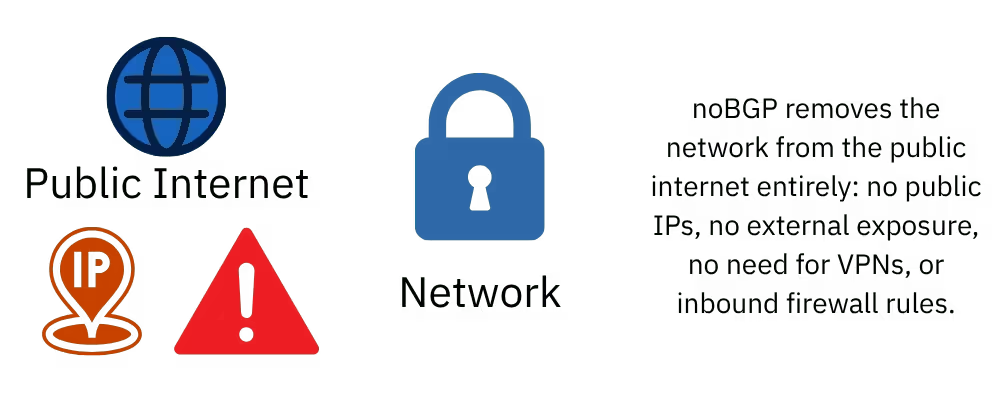
noBGP replaces traditional IP-based networking with an intent-based overlay network prioritizing identity, policy, and deterministic routing. A radically simpler, inherently secure foundation for zero-trust networking; without the need for public IPs, VPNs, or perimeter defense layers.
With noBGP, resources never need public IP addresses to be reachable. You make connections based on identity and policy, not IP and port exposure. This means:
Your infrastructure effectively disappears from the public internet.
Zero trust isn’t only about access; also about where your data flows. With noBGP, you get to:
Unlike BGP, which relies on third-party AS paths, noBGP gives you control over the journey.
Zero trust means access is enough and in time. With noBGP:
This makes supporting ephemeral infrastructure or contractors easy without lingering risk.
By making the network private by default, noBGP reduces or eliminates the need for:
Fewer tools, fewer rules, and less human error.

Here’s how to begin implementing zero trust with noBGP in your environment:
Determine which services or devices you should protect under a zero-trust model. This might include:
Set up noBGP agents on your workloads or gateways. Agents establish outbound-only, encrypted, identity-based connections across clouds or sites.
No inbound ports. No public IPs. No NAT traversal required.
Use networking policies to describe how data is routed:
You can define and enforce these policies simply, and they scale without configuration sprawl.
Use built-in logs and access visibility to:
noBGP integrates well with identity providers and logging tools, making this step straightforward.
Implementing zero-trust networking doesn’t have to be overwhelming. With noBGP, you:
✅ Remove public exposure
✅ Control where data flows
✅ Automate and revoke access
✅ Eliminate legacy security debt
As more organizations adopt microservices, hybrid cloud, and dynamic infrastructure, zero-trust networking becomes the standard. noBGP makes this practical, efficient, and cloud-native from day one.